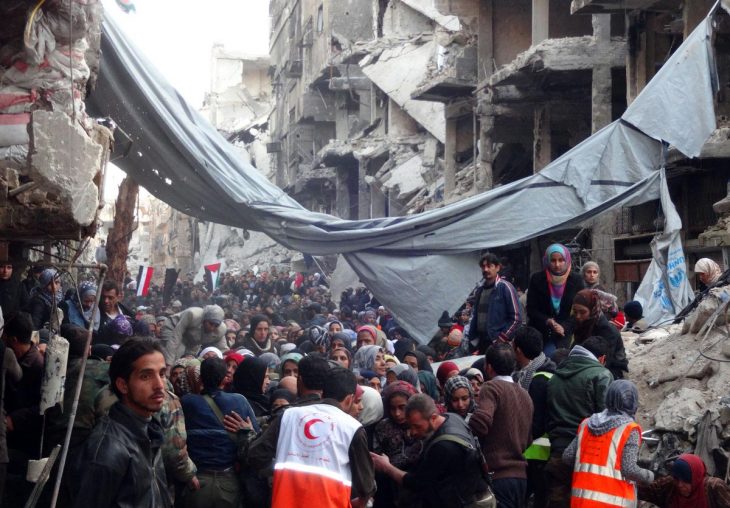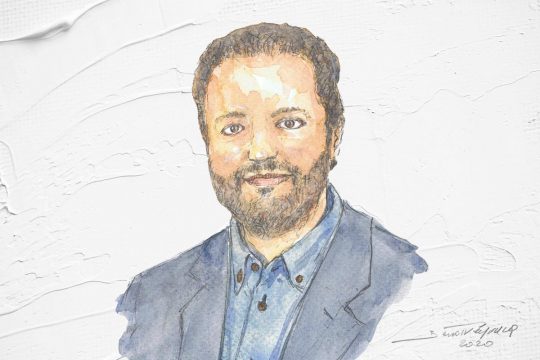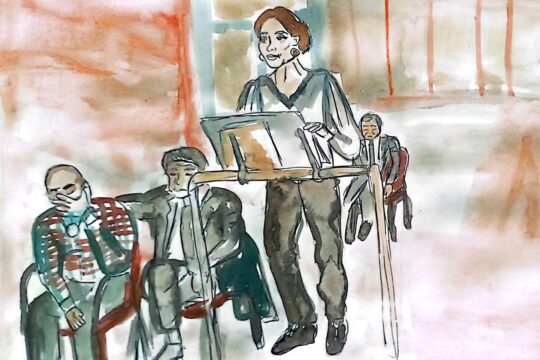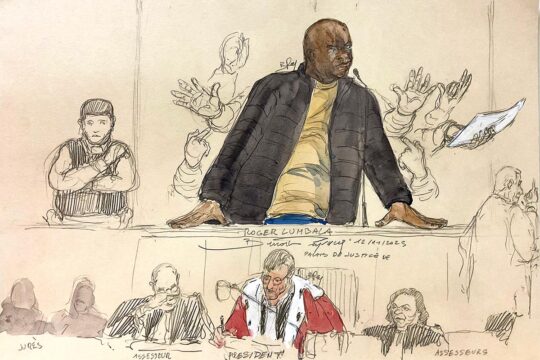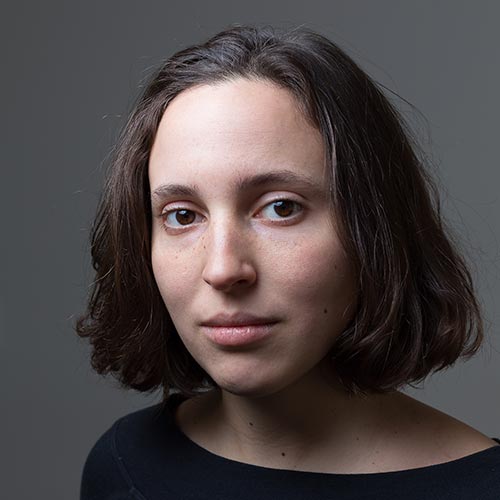JUSTICE INFO: Germany has been on the forefront of prosecuting crimes committed in Syria, by the Bashar al-Assad regime and its allies. Two Syrian secret service officers have been convicted of crimes against humanity in Koblenz, and a Syrian doctor stands accused of them in Frankfurt. Who is the defendant in the latest trial, that started last summer in Berlin?
PATRICK KROKER: Moafak D. was a leading figure in a pro-Assad militia in Yarmouk, a refugee camp and district of Damascus. He is accused of war crimes for launching a grenade into a crowd that had gathered to collect UN aid packages in March 2014. At the time, Yarmouk was under siege by the Assad regime that considered its population rebellious. From the end of 2013, the mostly Palestinian inhabitants had no electricity, no water, and no food. For greater political reasons, the regime had allowed humanitarian aid deliveries to Yarmouk. But it was playing the well-known game of despots: to allow aid, but then obstruct its distribution. For example in Yarmouk, it was not unusual that snipers shot at people collecting aid packages.
But the defendant is said to have had a personal motive for the crime.
His nephew was allegedly killed a few days before in a shootout with members of the Free Syrian Army (FSA) that controlled another part of Yarmouk. The defendant is said to have fired at the starving civilians out of revenge for that.
The Koblenz trial took an in-depth look at the structure of the Syrian secret services. Is the court in Berlin doing the same with the regime militias?
The militias are extremely important for understanding the Assad regime’s crimes. They were employed to oppress the uprising from the very beginning: not only to compensate for the weakness of the Syrian army, but also to add a sectarian component to the conflict. Unfortunately, this issue is not represented sufficiently in this trial. Moafak D. is charged with war crimes, and so the relevant fact is merely that he belonged to a group that participated in the armed conflict.
Yarmouk was founded in 1948 as a refugee camp for Palestinians and has since developed into a district of Damascus. The defendant was stateless, and a member of the Popular Front for the Liberation of Palestine (PFLP) as well as of the Free Palestine Movement (FPM). The victims, too, were Syrian Palestinians. How were they involved in the Syrian civil war?
The Palestinian militias had been present in the camp from the time, when a large number of Palestinians were forced to leave their country and resettle to Syria. Some militias supported the regime early on, when Bashar al-Assad’s father was still in charge. They are hardly connected to Palestine anymore. They were instrumentalized time and again by the Syrian regime. When the uprising started in 2011 in Syria, it was unclear which side the Palestinian population of Syria would be on. Then, in 2012, Yarmouk saw some big anti-Assad demonstrations. After that, pro-regime militias like the PFLP and FPM were further militarised by the Assad regime and employed to control the camp, terrorize its population and enforce the siege.
The defendant arrived in Germany in 2018. How did the prosecution take notice of him?
Once again, the Syrian civil society played an important role. The defendant was well known in Yarmouk, many even knew his name. He held a prominent position in the militia and was notorious for his cruelty. There are reports about him personally shooting at protesters, and about people being disappeared, tortured, raped and even killed at the checkpoints he commanded. He had a distinctive look: a white beard that he coloured black above and under the lips. And he fired an anti-tank weapon [used to fire the grenade] in broad daylight where anyone could see him. Soon, this event was discussed in Arabic media and on Facebook. In early 2020, former inhabitants of Yarmouk found out that Moafak D. was in Germany, and contacted the Syrian lawyer Anwar al-Bunni. He collected the information and spoke to witnesses. Then he shared his findings with the general prosecutor who started investigating.
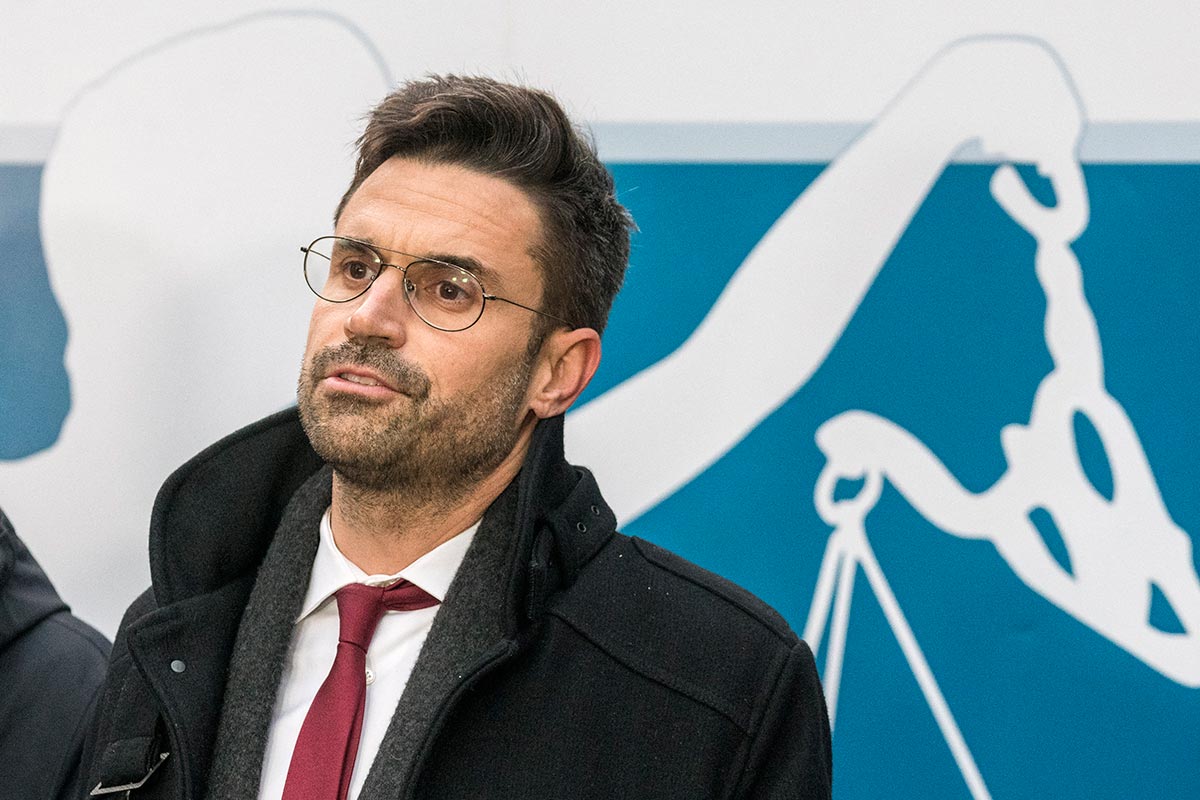
What evidence has been presented against Moafak D.?
Unlike in a traditional homicide trial, there is no murder weapon, no access to the crime scene and no bodies among the evidence. This is not unusual for an international trial. At the Superior Court of Justice in Berlin, the testimonies of nine eyewitnesses have been most important. They are supported by quite a large amount of imagery, partly from social media, which was recorded before the crime and afterwards in the hospitals. But there is no material from the moments just before and after the crime was committed. The court has to reconstruct whether the weapon seen by the eyewitnesses is corroborated by other witnesses and by the injuries people suffered. Two men who survived the attack and are now joint plaintiffs in the case have had their injuries examined. One of them still had grenade parts in his body that match the assumed weapon. On top of all that, we have heard experts on the political context in Syria.
There are no bodies – but do we know who was killed?
None of the witnesses have been able to name someone they knew personally that died. But they knew names from Facebook or had heard them from others. We have testimonies from people who stood close to where the grenade hit. Some said they saw injuries that nobody could have survived. There are reports from the hospital that many people died. However, there was a shooting after the attack, which could have caused some deaths. But we also have a witness who is sure that he saw deaths in the hospital that were caused by a bigger explosion, by the kind of grenade that the defendant launched that day. I am certain that around twenty people were killed, even if we cannot identify them by name. We will see how many deaths the court will consider proven.
Were the victims civilians?
Yes, all the victims and bystanders were normal civilians who hardly left their houses, because they knew how dangerous it was. They had to go out, because they were starving. The situation in Yarmouk must have been awful. One person said they ate their cat, because they were so hungry. These people did not participate in any conflict. They were queuing for food out of desperation.
Two of them have joined the trial as plaintiffs and are represented by you and your colleague Sebastian Scharmer. What did they go through?
The two men, aged 48 and 57, were citizens of Yarmouk and had gone out to collect a food parcel. There is a video that shows my client in the emergency room, undergoing surgery on the aorta on his thigh – a life-threatening surgery, and yet he keeps asking were his food parcel is. The other plaintiff had grenade pieces in his body and suffers from massive back issues until today. Both of them are mentally strained.
In December, the defendant commented on the events for the first time. His lawyers read out his statement, in which he claims that he had not been to Yarmouk since the end of 2012. What strategy have you observed on the side of the defence?
I cannot understand the tactics behind the defendant’s statement. It seems to me like an act of desperation on his part, maybe even against his lawyers’ advice. It makes no sense to say, “I was not there.” I saw pictures that show him in Yarmouk before and after the crime. Apart from this statement, the defence has focused on carving out the discrepancies between witness testimonies. However, these are not unusual – they happen, when one person describes the same event twice, and especially, when different people talk about the same event several times. The exact location of the crime has been one of the points where testimonies did not match. These people had never used Google Maps in Yarmouk, not until their asylum hearing in Germany. So, there might have been some discrepancies, but they all agreed that someone fired a grenade in the direction of a sand bank where many people were standing. I consider the differences between the testimonies marginal. Overall, the chain of evidence is very strong.
What verdict do you expect?
I expect that Moafak D. will be found guilty of the war crimes, murders, and attempted murders of which he is accused. That would be a mandatory life sentence.
The plaintiffs have requested to accuse and convict the defendant not only of war crimes, but also of crimes against humanity. Why is that important to them?
This request is based on how witnesses described the conditions in Yarmouk at the time. Even the UN special rapporteur for Syria called Yarmouk the “lowest circle of hell”. The Assad regime waged a widespread and systematic attack against the civilian population starting from April 2011 and thereby committed a crime against humanity. The first verdict from Koblenz is now legally binding and confirms this. The trial there focused on the torture of prisoners, but besieging and starving districts like Yarmouk was an important part of this crime. It is a typical method used by the regime to punish parts of the population that it perceived as disloyal. The same happened in Daraa and Zabadani. All the witnesses who appeared in this court started their testimonies by saying: “First, I have to tell you how terrible it all was, how we suffered, how these groups terrorized us.” The war crimes charge fails to register all that. For the efficiency of the trial, it makes sense to focus on war crimes, because the court does not have to prove the whole context, the so-called “chapeau element”. But it does not fully reflect the injustice that happened in Yarmouk and the suffering of the victims.


